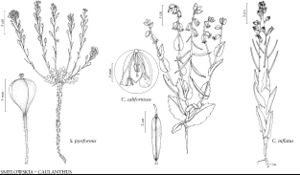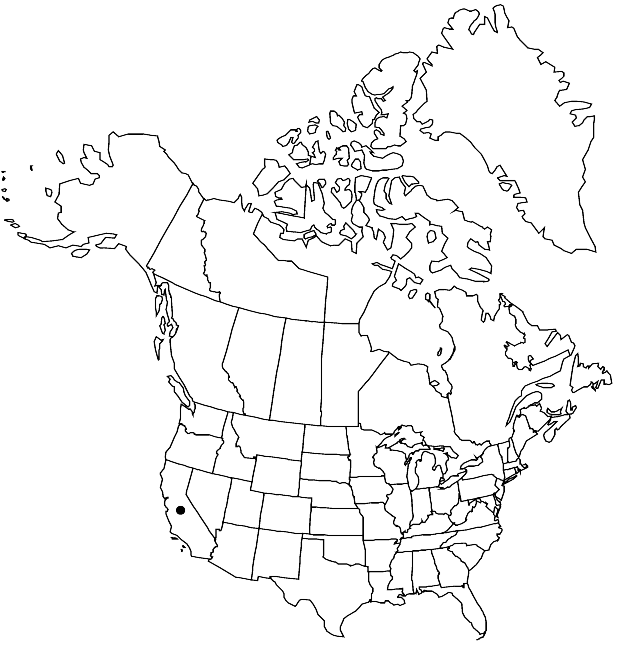Caulanthus californicus
Ann. Missouri Bot. Gard. 9: 299. 1923.
Annuals; (sometimes glaucous), hispid proximally, glabrous distally. Stems erect to subdecumbent, usually branched distally, 0.9–5.5 dm, sparsely hispid basally. Basal leaves rosulate; petiole 0.3–3.5 cm; blade oblanceolate, 0.7–8 cm × 3–25 mm, margins often coarsely dentate, sometimes somewhat pinnatifid. Cauline leaves (median) sessile; blade oblong or suborbicular to obovate, 0.6–7.5 cm × 3–55 mm (smaller distally, base amplexicaul), margins coarsely dentate or entire. Racemes (densely flowered), with a terminal cluster of sterile flowers. Fruiting pedicels ascending to reflexed, 2–11 mm, usually pubescent, rarely glabrous. Flowers: sepals erect to ascending (dark purple in bud, purplish green after anthesis), ovatelanceolate, 4–9 (–11) × 2.5–3.5 mm (unequal, adaxial one longest, keeled); petals white (with purple veins), 5.5–12 mm, blade 2–5 × 1–2 mm, crisped, claw narrowly oblong to lanceolate, 5–8 × 2.5–4 mm; filaments in 3 unequal pairs, abaxial pair 3–8 mm, lateral pair 2–7 mm, adaxial pair (connate), 5–9 mm; anthers oblong, equal, 1–3.5 mm. Fruits erect or reflexed (often straight), angustiseptate, 1.7–5 cm × 3.5–6 mm; valves each with prominent midvein; ovules 46–100 per ovary; style 0.2–2.7 mm; stigma strongly 2-lobed (lobes to 2 mm, opposite valves). Seeds (subglobose, plump), 1–1.6 mm diam., (cotyledons deeply 3-fid). 2n = 28.
Phenology: Flowering Feb–Apr.
Habitat: Grasslands, juniper woodlands
Elevation: 100-1000 m
Discussion
According to R. E. Buck (1995), the range of Caulanthus californicus was highly reduced from conversion of habitats into agricultural land, and it is now restricted to portions of Fresno, Santa Barbara, and San Luis Obispo counties, whereas its previous range included also Kern, Kings, Monterey, Tulare, and Ventura counties.
Selected References
None.
Lower Taxa
"elongated" is not a number."thick" is not a number."dm" is not declared as a valid unit of measurement for this property.

